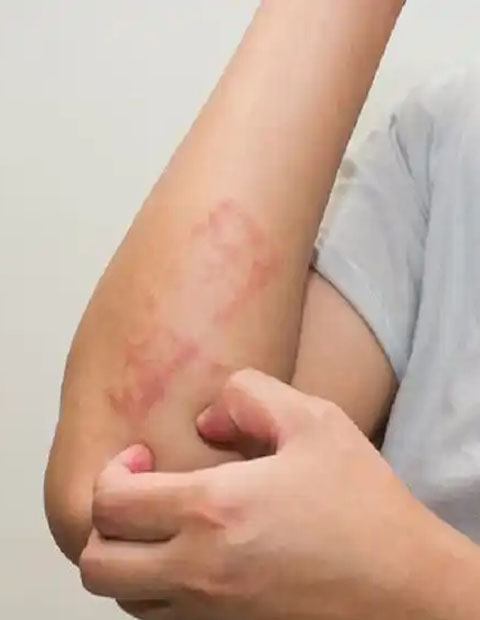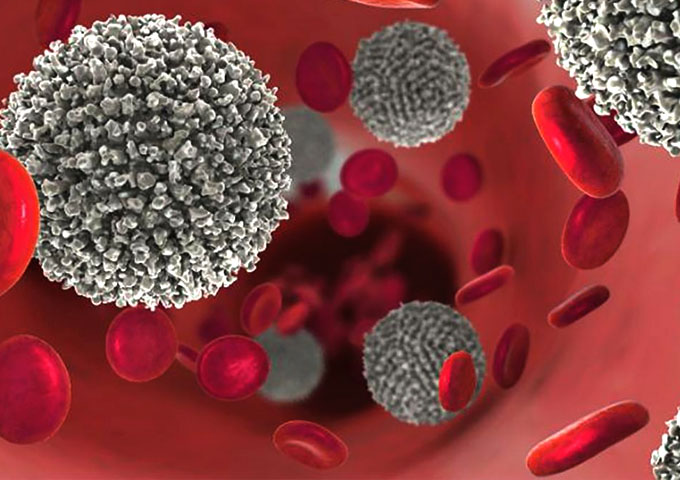What is Leukemia?
Leukemia is cancer of the blood-forming tissues in the body, including the bone marrow and lymphatic system.
Leukemia usually involves white blood cells. White blood cells are powerful infection fighters; they usually grow and divide in an organized fashion, as the body needs them. But in people who have leukemia, the bone marrow makes one Leukemia is usually thought to develop when some blood cells acquire changes (mutations) in their genetic material, or DNA. A cell’s DNA contains instructions that tell it what to do. Normally, the DNA tells the cell to grow at a certain rate and to die at a certain time. In leukemia, mutations tell blood cells to continue growing and dividing.
In these cases, the production of blood cells tends to get out of control. Over time, these abnormal cells can crowd out healthy blood cells in the bone marrow, lowering the number of healthy platelets, white blood cells, and red blood cells, causing the signs and symptoms of leukemia.


- Leukemia Classification.
Doctors classify leukemia based on how fast it progresses and the types of cells involved.
That is why based on speed it is classified as follows:
- Acute leukemia: In acute leukemia, the abnormal blood cells are immature blood cells (blasts). They cannot fulfill their normal functions and multiply fast; therefore, the disease rapidly worsens. Acute leukemia requires timely and aggressive treatment.
- Chronic leukemia: There are many types of chronic leukemias. Some produce too many cells and others, too few.
Chronic leukemia comprises more mature blood cells. These blood cells replicate and accumulate very slowly, and can function normally for a while. Some forms of chronic leukemia do not initially cause early symptoms, so they can go unnoticed or undiagnosed for years.
In the following classification the cell type is taken.
- Lymphocytic leukemia: This type of leukemia affects the lymphoid cells (lymphocytes) that make up lymphoid or lymphatic tissue. Lymphatic tissue forms the immune system.
- Myelogenous leukemia: This type of leukemia affects myeloid cells. These give rise to red
blood cells, white blood cells, and cells that make platelets.
Types of leukemia
- Acute lymphocytic leukemia : This is the most common type of leukemia in young children.
- Acute lymphocytic leukemia can also affect adults.
- Acute myelogenous leukemia: Acute myelogenous leukemia is a common type of leukemia.
It affects children and adults. Acute myelogenous leukemia is the most common type of acute leukemia in adults. - Chronic lymphocytic leukemia: If you have chronic lymphocytic leukemia, the most common chronic leukemia in adults, you may feel fine for years without needing treatment.
- Chronic myelogenous leukemia: This type of leukemia mainly affects adults. A person wit chronic myelogenous leukemia has few or no symptoms for months or years before entering a phase in which the leukemia cells grow faster.
- Other types: There are other rare types of leukemia, such as hairy cell leukemia, myelodysplastic syndromes, and myeloproliferative disorders.
- Acute lymphocytic leukemia : This is the most common type of leukemia in young children.
Symptoms
The symptoms of leukemia can vary depending on the type of leukemia.
Common signs and symptoms include the following:
- Fever or chills.
- Persistent fatigue, weakness.
- Frequent or severe infections.
- Weight loss without trying.
- Swollen lymph nodes, enlarged liver or spleen.
- Bleeding and bruising easily.
- Recurrent nosebleeds.
- Small red spots on the skin (petechia).
- Hyperhidrosis, especially at night.
- Pain or tenderness in the bones
Leukemia in Mexico.
According to GLOBOCAN, it is estimated that in Mexico in 2020, 6,955 new cases of this disease were diagnosed and 4,786 people died from it, thus being one of the top ten cancers with the highest incidence and mortality in the country.
In recent years, out of every 100 hospital discharges due to cancer (malignant tumors), in the population from 0 to 19 years of age, 73 are in lymphoid, hematopoietic or related tissues.
Lymphoid leukemia is part of this classification, which alone represents 61% (24,851) of all cancer discharges (40,679) in this population group.Leukemia in Latin America.
In Mexico, each year between 5,000 and 6,000 children are diagnosed with cancer. About 5 out of 10 of these children are diagnosed with leukemia. Most children are diagnosed when the leukemia is in its late stages (about 70%, or 7 out of 10).
In Peru, each year about 1,300 children are diagnosed with cancer. Leukemia accounts for 1 in 3 cases of childhood cancer.
In Colombia, some 6,218 children were diagnosed with cancer in 2018. Acute lymphocytic leukemia (ALL) is the most common type of childhood cancer in the country.
Patients suffering from acute leukemia in Latin America suffer from the lack of timely diagnosis and arrive when the disease is very advanced, which complicates treatment.Leukemia worldwide.
Acute leukemia usually occurs in 3-6 patients per 100,000 inhabitants per year.
Acute lymphoid leukemia is more frequent in children, being the most frequent tumor in childhood, it constitutes approximately 25 percent of all cancers in children under 15 years of age. Myeloid affects more adults, with an increasing incidence.
The survival prognosis worsens as age increases, it is poor after 60 years of age, and it is also unfavorable when the diagnosis of childhood acute leukemia (especially lymphocytic leukemia) occurs in children under 1 to 2 years of age and in those Over 15 years old.
Treatments.
Chemotherapy : Special drugs are used to shrink or kill cancer cells. These drugs can be pills you take or drugs injected into your veins, or sometimes both.
Bone marrow transplant: is a procedure that replaces defective stem cells from a person’s bone marrow .

